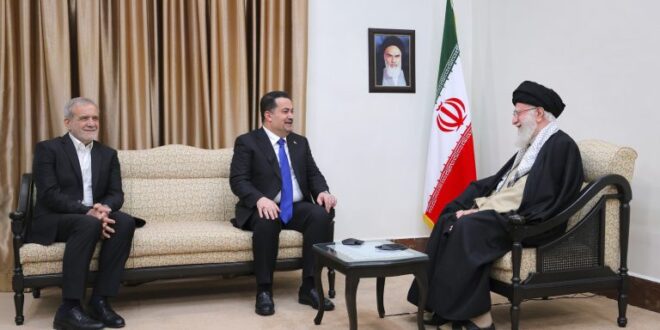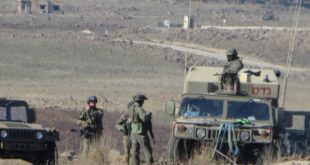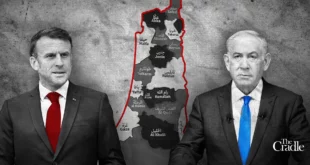Bottom Line Up Front
- The Israel-Hamas ceasefire agreement, if fully implemented, has the potential to calm the warfare that has roiled the region since the October 7, 2023 Hamas attack.
- The Houthi movement (Ansarallah) vows to resume attacks on Israel, commercial shipping in the Red Sea, and U.S.-led coalition naval vessels, if Israel breaches the Gaza agreement.
- The Gaza truce will facilitate efforts by the Iraqi government to disarm several militia groups linked to Iran’s Islamic Revolutionary Guard Corps – Quds Force (IRGC-QF).
- The ceasefire, even if it holds, is unlikely to enable the Trump administration to broker a normalization of relations between Saudi Arabia and Israel.
Regional and global officials have long looked to the cessation of the conflict in Gaza to assuage a region experiencing an unprecedented scope of warfare since the October 7, 2023 Hamas incursion into Israel. The Hamas attack prompted Iran’s non-state allies – which, together with Iran, constitute a self-declared “Axis of Resistance” – to engage in attacks on Israel, the United States, and global commercial entities to support Hamas’ battle against the Israel Defense Forces (IDF). Iran’s allies initially vowed they would only halt their assaults when there was a complete end to the war in Gaza. The conflict has prompted widespread demonstrations in regional capitals, protesting the scope and effect of Israel’s operations against Hamas on the Gaza population. Protesters demanded, although unsuccessfully, that their governments sever their ties to Israel and distance themselves from the United States – the main supplier of arms to Israel.
The Gaza ceasefire, if its three-phased outlined process is completed, carries significant potential to wind down the conflicts roiling the region since the October 7 attack. Trump officials, particularly his designated Mideast Envoy Steven Witkoff, participated in the talks in Doha that finally forged the truce, seeking to calm the region before Trump’s second inauguration on Monday. Trump’s team hopes that a quieting of the Middle East will enable the new administration to focus on problems higher on its foreign policy agenda, such as securing the southern U.S. border and addressing the rising threat from China.
Within the region, incoming U.S. officials view the war in Gaza as distracting from efforts to respond to Iran’s expanding nuclear program and the continuing threat from regionally-based terrorist organizations, such as the Islamic State (ISIS). The quieting of the Gaza conflict might facilitate efforts by Iranian civilian leaders to negotiate a revised, and more comprehensive nuclear accord with the Trump administration, which abrogated the 2015 multilateral Iran nuclear deal as too concessionary to Iran. In addition, Iranian leaders will have difficulty justifying further exchanges of fire with Israel if hostilities in Gaza end.
The Gaza pact also deprives Iran’s allies of a clear rationale to continue their attacks. Perhaps more significantly, the truce enables the Axis of Resistance movements to explain their decisions to stand down as a response to the truce rather than a needed respite from the blows delivered by Israel and U.S.-led forces. The setbacks Lebanese Hezbollah experienced from Israeli operations had already prompted the movement’s leaders to withdraw from its involvement in the Gaza conflict. The movement’s late November truce with Israel, which long predated the Gaza ceasefire agreement, appears to be holding as the deadline for full implementation approaches on January 26. An end to the Gaza warfare further reduces the possibility that Israel-Hezbollah hostilities will reignite. The Assad regime, which collapsed in early December at the hands of a Sunni Islamist-led rebel offensive, did not join the Axis of Resistance members that opened an active front against Israel after the October 7 attack. The new leaders of post-Assad Syria express no inclination to combat Israel, even if the Gaza truce were to break down.
Since the Gaza ceasefire was agreed, two additional key Iranian partners – both of which have been under military or political pressure – have openly or tacitly agreed to stand down, provided the Gaza agreement is implemented. One such Iranian partner, the Houthi movement in Yemen, has been the last major Axis of Resistance member still actively fighting Israel and its backers, but U.S.-led and Israeli attacks reportedly have degraded its missile and drone arsenal. Although the Houthis announced the Gaza pact prompted them to cease their attacks, the movement’s leader, Abdul Malik al-Houthi, said in a televised speech on Thursday: “We will continue to monitor developments in Palestine during the three days prior to the entry into force of the Gaza agreement. If the Israeli massacres continue, we will continue our operations…At any stage in which the aggression retreats from the agreement, we will be ready to provide military support to our Palestinian brothers.” The statement disappointed maritime commercial and security sources as failing to reassure them that the threat to Red Sea shipping has ended.
Undoubtedly prompting global concern, the Houthis launched two ballistic missiles at Israel on Saturday even though, hours earlier, Israel’s cabinet formally ratified the Gaza ceasefire pact, and Hamas readied the first hostage release set for Sunday. Should Houthi attacks continue, the Trump administration is likely to escalate combat operations against the group and formally return it to the list of designated Foreign Terrorist Organizations (FTOs).
In another theater, Iraq, the Gaza truce will likely produce a more durable end to violence by Iran-aligned Iraqi militia forces against U.S. troops in Iraq and Israel. Even before a Gaza agreement had been reached, the militias were coming under significant pressure from a Baghdad government that sought to avoid becoming an arena for warfare between Israel and the Axis of Resistance. Iraqi leaders tolerated some Iraqi militia attacks on Israel after October 7 in recognition of public anger at the hardships Israel’s operations against Hamas were causing. However, the militia attacks on U.S. forces in Iraq – which predate and transcend the Gaza conflict – were disrupting Iraq’s efforts to balance its relationship with both Washington and Tehran.
In recent months, and particularly since the fall of the Assad regime in neighboring Syria, Baghdad had been more clear it would stand up to Iranian pressure to expel the 2,500 U.S. advisory forces from the country. Iraqi leaders consider the U.S. military help even more crucial than before the collapse of Assad, in large part to counter any effort by ISIS or other Sunni Islamists in Syria that pose a threat to the Shia-led regime in Baghdad.
Stimulated more by the fall of Assad and the Lebanon ceasefire than events in Gaza, Iraq’s Foreign Minister Fuad Hussein stated in a January interview: “Two or three years ago it was impossible to discuss this topic (disarming the Iran-aligned militias) in our society…But now, having armed groups functioning outside the state is not acceptable…Many political leaders, many political parties started to raise a discussion, and I hope that we can convince the leaders of these groups to lay down their arms, and then to be part of the armed forces under the responsibility of the government.”
Hussein’s comments came amid the culmination of the Gaza ceasefire agreement and one week after Iraq’s Prime Minister Mohammad Shia al-Sudani visited Iran to obtain Tehran’s concurrence with Baghdad’s plan to rein in the Iran-aligned militias, particularly the close IRGC-QF ally Kata’ib Hezbollah (KH). However, any hopes Sudani might have had that Iranian Supreme Leader Ayatollah Ali Khamenei would acquiesce to a dismantlement of Iran’s surrogates in Iraq were quickly dispelled in their meeting. Iran state media quoted Khamenei as insisting Sudani not constrain but rather strengthen the militias – which are formally, although not practically, under the official Iraqi chain of command. Still, the Gaza ceasefire undermines the justifications Iraq militia leaders might use to resist Baghdad’s efforts to constrain their autonomy.
Aside from mitigating regional conflict, incoming Trump administration officials believe a successful Gaza truce will remove obstacles to Saudi-Israel normalization that both they and Biden administration officials have sought to forge. However, even if the Gaza agreement is fully implemented, it is unlikely Saudi de-facto leader Crown Prince Mohammad bin Salman (MBS) would be able to move forward on normalization in the near term. The level of anger of the Saudi population over the civilian casualty count, destruction, and the dire humanitarian situation in Gaza is too high to support that initiative – no matter the incentives the Trump team might offer in exchange. Moreover, MBS has demanded that normalization with Israel requires not only an end to the Gaza conflict but, more broadly, a roadmap to the formation of an independent Palestinian state.
Since the October 7 Hamas attack, neither Israeli leaders nor public opinion polling in Israel has indicated support for a Palestinian state. Moreover, a 2023 China-brokered Iran-Saudi restoration of relations and Iran’s regional setbacks in 2024 have reduced, for Saudi leaders, the strategic imperative of normalization with Israel or a related binding security accord with the U.S. However, the Gaza pact likely provides MBS and other Saudi leaders with enough political cover to continue quiet cooperation with Israel against Iran – cooperation that manifested as Saudi assistance to U.S. and Israeli efforts to intercept the two large Iranian missile barrages against Israel in 2024.
 Eurasia Press & News
Eurasia Press & News



